Having a redundancy circuit for customers can be very beneficial for a business. Providing a secondary route ensures no downtime and that business continuity is guaranteed. Establishing a secondary Border Gateway Protocol (BGP) session via another service provider (SP) is called BGP multihoming, and it can make sure that BGP routes and services are up and running all the time.
BGP Multihoming Scenarios
Now and then, failure in routing happens with the service providers. Having a secondary route via another service provider can be very advantageous but keep in mind the cost consideration, availability of the circuit, especially in remote areas, and control plane separation.
A backup circuit for incoming traffic and outgoing traffic will ensure the services offered are up and running. It gives the customers peace of mind, and they are guaranteed to have a reliable network connection. BGP multihoming solution makes sure that there is no downtime on the BGP routes.
Here are the most common multihoming scenarios in an enterprise network:
1. R1 is connected to R3 via the same service provider. In this topology, link failure is addressed. However, if one of the service provider’s routers fails, the customer will also experience network failure.
Static routes are used in the place of a routing protocol, so two equal-cost paths are introduced to reach the destination. Load sharing transpires with the loopback address used to establish a BGP neighbor. Thus, it will not protect the network when the ISP fails.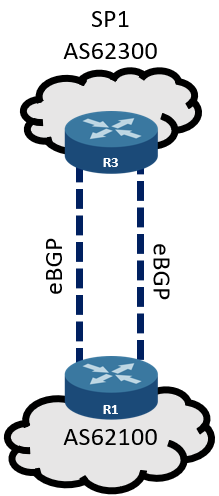
2. Load sharing when dual-homed to a service provider via multiple local routers shows how to establish sharing of the load when various links exist between a remote AS and a local AS. These links are connected in one router at the local AS and on multiple routers at the remote Autonomous Systems in a single-homed external BGP environment.
The topology below uses the maximum-paths command. BGP chooses one best path among the possible equal-cost paths learned from one AS by default. But you can change the maximum number of parallel equal-cost paths allowed. You must include the maximum-paths paths command under the BGP configuration for this revision to happen. Use a number between 1 and 6 for the path value.
R1 connects to both R3 and R4 within the same ISP. This approach accounts for link failures, but if R1 goes down or any router within the SP1’s network, it shall result in network-wide downtime.
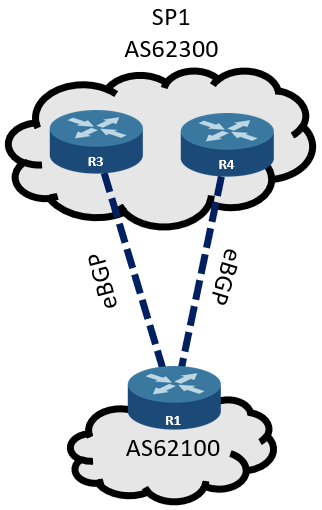
3. R3 and R4 are connected to R1 but on a separate service provider. This design addresses failure on the link and the possibility of failure on either of the ISP networks, which will optimize the traffic routing, but a failure in R1 shall mean a total network failure.
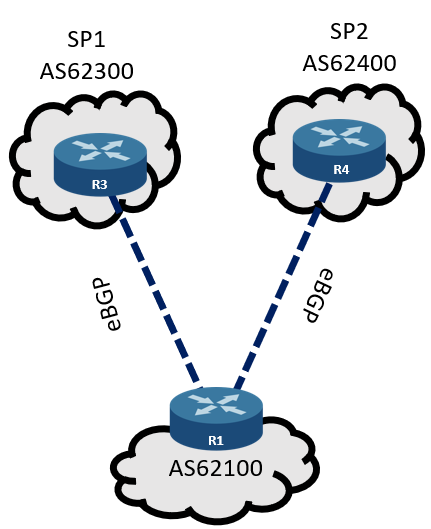
4. R1 and R2 established an internal BGP neighbor relationship while R3 connects to SP1 and SP2 to R4. Both link and service provider network failure is accounted for in this design and optimized traffic routing protocol.
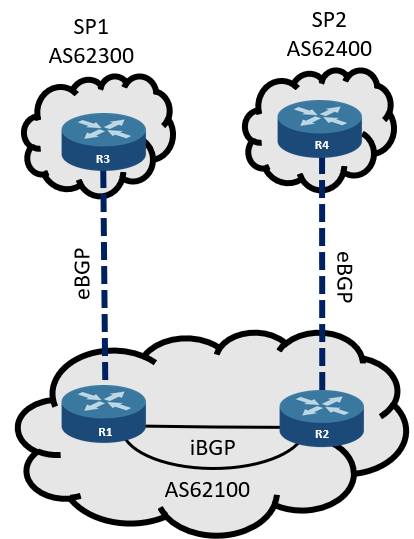
Internet Transit Routing
When an enterprise utilizes BGP routes to connect with multiple service providers, it must be aware of the risk of inadvertently having its autonomous system (AS) become a transit AS. The diagram below shows that a problem may happen if R1 and R2 utilize the BGP default routing protocol policy. A user who connects to SP3 goes through the enterprise network to reach SP4, where the server is connected.
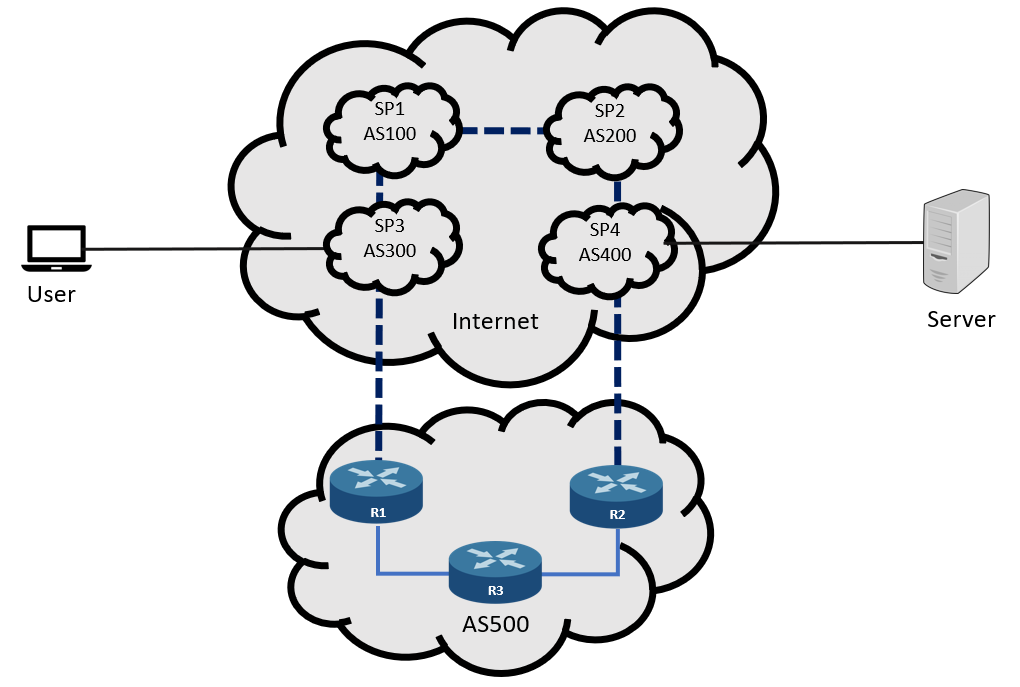
Branch Transit Routing
There are two routing types when it comes to failover during a failure in a BGP multihoming network. Accounting traffic patterns is essential for a proper network design to prevent routing loops or suboptimal routing.
Deterministic Routing During Failover
This routing happens when the path between sites is predetermined and predictable, simplifying traffic troubleshooting and symmetric flow within the same path compared to asymmetric forwarding due to the full path discovered in both directions.
Non-deterministic Routing During Failover
This type of routing during failover happens when a link failure within the SP network that the branch router connects to the destination branch router through an intermediary branch router. Below are issues that may arise with unplanned transit connectivity:
- The transit router’s circuits can become oversaturated because they were specifically sized for that site’s traffic and not the traffic passing across them.
- The routing patterns can become unpredictable and non-deterministic.
Branch routers must not act as transit routers in a dual-homed environment. Transit routing of traffic from another branch is generally undesirable in most configurations since WAN bandwidth may not be appropriately sized. Configuring outbound route filtering at each branch site can avoid transit routing within BGP routers. If transit behavior is required, it is restricted to the data centers or the following specific locations:
- Proper routing design can accommodate outages.
- Bandwidth can be sized accordingly.
- The routing pattern is bidirectional and predictable.
Download our Free CCNA Study Guide PDF for complete notes on all the CCNA 200-301 exam topics in one book.
We recommend the Cisco CCNA Gold Bootcamp as your main CCNA training course. It’s the highest rated Cisco course online with an average rating of 4.8 from over 30,000 public reviews and is the gold standard in CCNA training:
